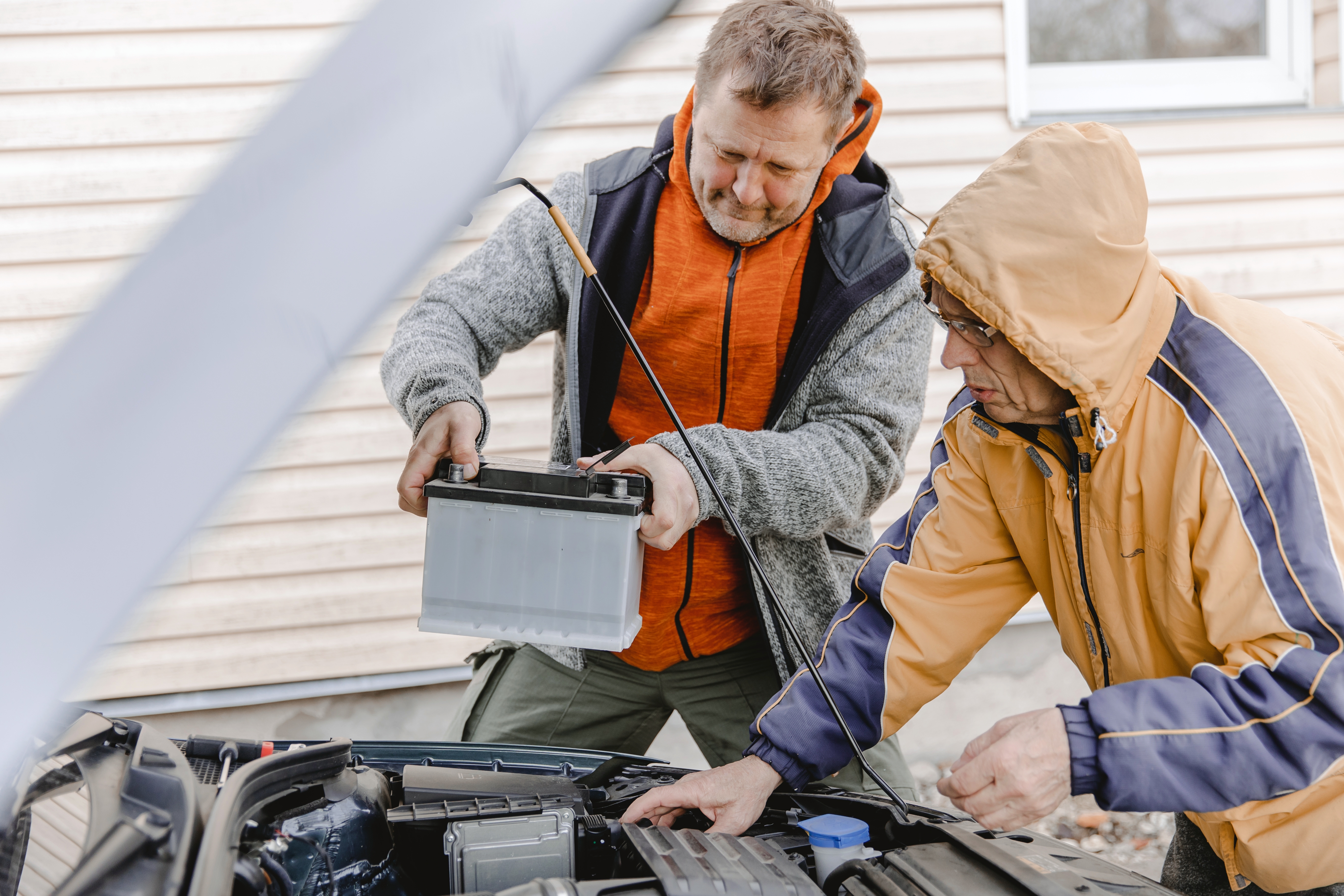How To Change An Alternator
An alternator is an oft-overlooked but vitally important piece of equipment in any vehicle. Its job is to keep the car’s battery charged by generating electricity via a turning rotor inside of a metal casing. Generally, a properly functioning alternator will put out between thirteen and eighteen AC volts, which is plenty to keep the battery charged and the electrical systems going. If your alternator has gone bad, you can save labor costs by replacing it yourself following these simple instructions.
Disconnect the Battery

This first step is extremely important in any do-it-yourself vehicle repair. Though this particular project does not directly deal with the battery, the alternator has several wires, one of which will be ‘hot’ - that means it will be electrically live and looking to be grounded. If you do not disconnect the battery before beginning work on the alternator (or any other project in the engine bay), you will likely be in for a big shock.
Locate the Alternator

To locate the alternator, look for a small fan-like object about the size of an adult man’s hands connected to a pulley and/or belt. Since an alternator consists of a rotor that is turned when the belt moves and that creates electricity by rubbing metal coils, there is a good amount of heat created; it will therefore be housed in a metal casing that will allow airflow to pass through, much like a fan.
Disconnect the Wires

Now that you’ve found the alternator, don your gloves and get to work. Depending on the type of vehicle and alternator you have, there may be one or several wires attached to the device. Using the proper sized wrench, remove the wire or wires from the back of the alternator. It may be helpful to label the wires as you disconnect them if you are worried about getting them back in the correct order later.
Remove the Belt from the Pulley

You’ve reached the most difficult part of the project - the removal of the belt. You won’t need to remove the entire belt, but you will need to loosen the tensioner pulley enough to slip it off. Depending on the type and age of your vehicle, you may have a spring-loaded tensioner or a rod-end type tensioner. Spring-loaded tensioners can be pulled back with a wrench, whereas rod-end type tensioners require using a wrench to loosen the belt by decreasing the length of the rod.
Remove the Bolts

Now that you’ve disconnected the wires and slipped off the belt, the only things holding your alternator in place are the bolts. Again, the number and location of these bolts will vary depending on the model alternator your vehicle requires. Generally, there are between two and four bolts holding an alternator in place. Often, they can be different lengths, so again, it may be helpful to label the bolts as you remove them.
Remove the Old Alternator and Compare it to the New One

Congratulations! With the removal of the final bolt, you should now be holding your old, defective alternator. You’ve successfully completed half of the project. With the old alternator in hand, make a quick comparison between it and your new one before moving on to the next step. Now is the time to make sure you’ve purchased or procured the correct replacement before attempting to install it in your vehicle.
Position the Alternator and Belt

When you’re ready to insert the new alternator into the engine compartment, you’ll need to pay careful attention to its position relative to its driving belt. To do this simply, first position the alternator in the space and loosely screw in one of the bolts you removed in step five. While the alternator still has some room to move, position the belt and rotate the alternator until there is no more slack in the belt. It may be helpful to use vise grips as a second set of hands in this step if you’re working alone.
Replace and Tighten all Bolts

Once you have gotten the alternator and belt in good position - there should no longer be any slack at all in the belt - you’re ready to re-insert the rest of the bolts that hold the alternator in place. These bolts should all be tightened snugly, but not so tight that you run the risk of stripping them out when you try to remove them in the future. Double-check that there is no slack in the belt by rotating the alternator.
Re-attach All Wires and Battery

Now that you have mounted your new alternator, refer to the labels you created earlier and re-attach the wires at the back of the device. Double-check that you are connecting the wires in the correct places; crossed wires can wreak havoc on a car’s electrical system. Once the wires are attached, you may reconnect your battery; again, check to be sure you’re connecting the positive cable (red) with its proper terminal. Do the same with the negative cable (black).
Test the New Alternator

As a final step, test out your new alternator by starting up the engine. The warning lights that probably alerted you to your engine trouble in the first place should no longer light up. Listen for a squealing sound in the pulley that can indicate that it’s too loose; on the other hand, be sure you have not over-tensioned the pulley. You can also test that the alternator is properly creating a charge by testing the current with a multi-meter.







